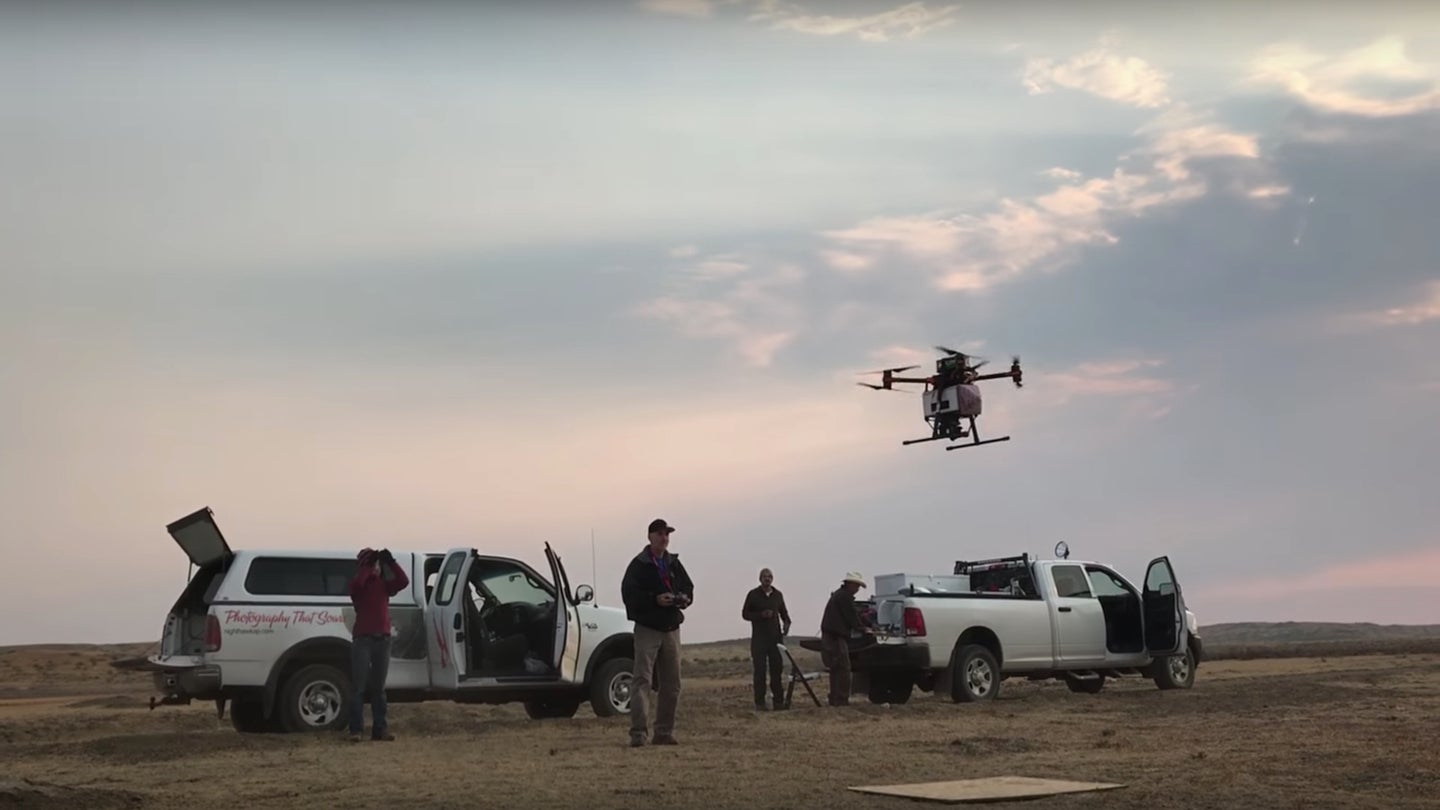Biologists are Saving Ferrets With the Help of a Pellet-Dropping Drone
In central Montana, a pellet-dropping drone is effectively vaccinating prairie dogs against the sylvatic plague.

In central Montana, North America’s most endangered mammal, the black-footed ferret, is receiving help from an unlikely source: a peanut butter pellet-deploying drone. According to NPR, prairie dogs make up the bulk of this ferret’s diet. Recently, the fatal disease, the sylvatic plague, has decimated the American prairie dog population. In order to save the ferrets, the prairie dog needs our help. This is where the drones come in.
Reportedly, Fish and Wildlife biologist Randy Matchett and World Wildlife Fund biologist Kristy Bly have teamed up in an effort to stop the number of ferrets in the wild from dwindling. Bly claims that only about 300 wild black-footed ferrets are left and that a highly effective strategy in saving them is tending to the unstable prairie dog population. “Prairie dogs are Chicken McNuggets of the prairie, where so many species eat them,” said Bly. But the sylvatic plague is capable of eradicating entire prairie dog populations in less than one month, so time is of the essence. The unmanned aerial vehicle has become a main point of consideration in that regard, with the idea being officially filed as early as March of 2016. Bly and Matchett have started vaccinating prairie dogs in central Montana against the sylvatic plague by aerially dropping peanut butter pellets infused with a vaccine from the skies.
Matchett has been at this for quite some time now. Plans to use a UAV for pellet distribution were filed last March. When the initiative was first publicized in July of the same year, the vital pellet-distributing component hadn't even been produced yet. Nonetheless, these determined biologists are now officially, successfully using a drone as they've intended—to vaccinate prairie dogs. According to WIRED, the drone is piloted across the prairie and distributes the pellets as precisely as possible. Matchett explained that "We have to drop one bait every 30 feet. If we don’t spread them out uniformly, one big, fat prairie dog could eat them all."
While the pellets taste like peanut butter, which prairie dogs thoroughly enjoy, they’re carrying a vaccine that’ll prevent the plague from affecting the prairie dogs. According to Bly, if you keep the dogs alive, the ferrets have a chance of not only survival but population growth. The traditional method in a scenario such as this used to consist of manual vaccine delivery. Now that we have drones at our disposal, the methodology has become far more effective. Matchett told The Guardian in 2016 that "It is the fastest, cheapest way to distribute the vaccine."

“Without [the ferret], do we really have a complete ecosystem?” Bly asked. Drones are becoming more than a hobbyist’s regular entertainment, or a tool for surveillance or public safety. They’re now effectively protecting our ecosystem, and being used to keep our environment as stable as possible. Though it's unclear just exactly how many UAVs the ferret-saving research team is utilizing in central Montana, Matchett is content with the unmanned aerial strategy. According to a report from The Washington Post (2016), he claimed that a traditional airplane would be too imprecise in its pellet-deployment. Drones would presumably work well, but Matchett was already looking to the future. "We’re saving hoverboards for last," said Matchett. While the enthusiasm is appreciated, and we'd all really like to get our hands on a hoverboard, drones will have to do, for now.
